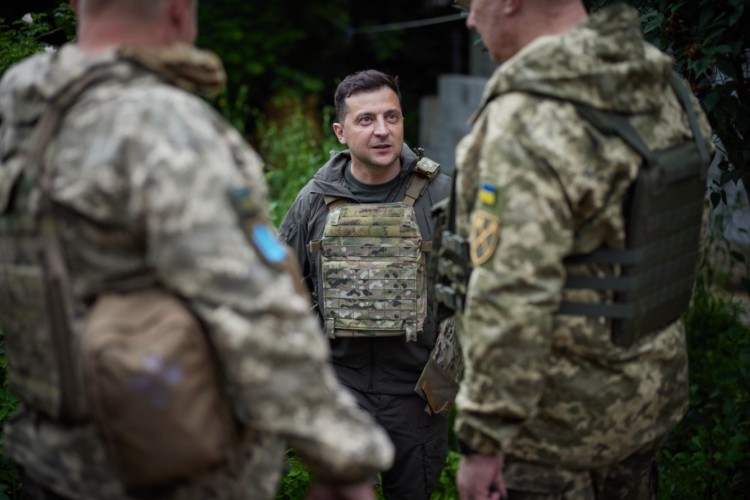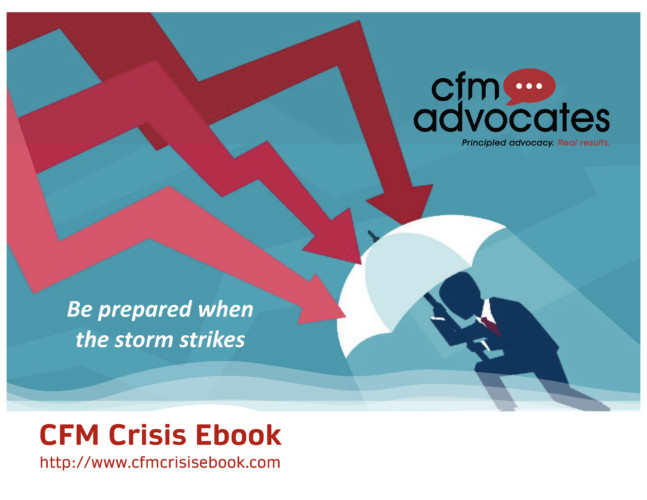
If you don’t think crisis communications can make a difference, you haven’t been watching Volodymyr Zelenskyy’s rally his nation under siege. His performance as the defiant leader of Ukraine has inspired the world and serves as a masterclass in crisis response.
“The president can’t change the country on his own. But what can he do? He can give an example.” – Volodymyr Zelenskyy
A former actor, Zelenskyy is no stranger to drama and storytelling. He draws on the same honed skills as Ronald Reagan. And, like Reagan, Zelenskyy has an uncanny ability to read and shape global opinion.
Perhaps most impressive is Zelenskyy’s use of social media in what The New Yorker calls the “first Tik Tok war”. His appearances in a green T-shirt and his short, punchy comments – “I need ammunition, not a ride” – have rallied Ukrainians, pushed world leaders and inspired average people to enlist, send money or welcome refugees. Ukrainian flags are one the hottest items for sale on the internet. Sunflowers have become an international symbol of freedom. All because of Zelenskyy’s mastery of crisis response.
Here are some Zelenskyy’s techniques to admire and emulate:
Show Them, Not Just Tell Them
Zelenskyy and his leadership team’s use video to show what’s happening as a result of Russian air assaults. We’ve seen bombed maternity hospitals, apartment buildings and kindergartens. These unsettling images barely require words to convey the peril facing Ukrainians and the need for air support to limit damage and loss of life.
Most crises don’t involve bombing, but many have physical manifestations. Plumes of airborne chemical leaks are captured by fearful neighbors. Reassuring words by a crisis spokesperson may not be as convincing as video showing how the leak has been stopped, the safety precautions being taken and the pollution surveillance being conducted. People see the problem, so it helps to show the solution in progress.
Create a Crisis Brand
Responding to a crisis is an exercise in reputation preservation. Branding a crisis response can play a powerful role in protecting a reputation. Zelenskyy wears that khaki green shirt as a symbol of daily defiance, not because he doesn’t have other clothes to wear. It has become his brand logo.

Johnson & Johnson’s highly praised crisis response in the Tylenol crisis centered on two words – patients first. That simple statement served as a guidepost for J&J employees responding to the crisis as well as reassurance the company was doing everything possible to protect people. The branding was reinforced by pulling all Tylenol from retail shelves and within a few weeks innovating with a tamper-proof bottle.
Branding a crisis can be as simple as having a spokesperson who speaks clearly, tells the truth and exhibits empathy for victims. In other words, branding can be as direct as building trust.
Have Something to Say – and Say It
Crisis response is not the place for mealymouth statements or circumlocution, as Zelenskyy has demonstrated. When a spokesperson steps in front of a battery of microphones, he or she should come prepared to say something significant and relevant. Effective visual tools can enhance understanding and widen impact.
Having something to say also means knowing what not to say. Crisis response is not a moment for lectures or tangents; it is time for precision and clarity. Speaking to the moment also is the best way to avoid expanding a crisis or igniting a new one.
Crisis media training is essential, even for experienced spokespersons and certainly for company executives more accustomed to speaking to Wall Street analysts or investment bankers. Stress-test media training helps with sharpening a message, delivering it effectively and knowing when to shut up. This kind of media training, which is videotaped, also holds up a mirror so speakers can see distracting physical tics or hear off-putting vocal habits.
Convey Reality
Perhaps Zelenskyy’s expertise as a crisis responder is best illustrated in his masterful ability to convey reality. Unlike many high-ranking public officials, Zelenskyy describes what’s happening to his people and his country as if he was sitting at a kitchen table. He uses words that paint images, backed up by actual images, showing the unfolding and unrelenting crisis Ukraine faces.
“People don’t really believe in words. Or rather, people only believe in words for a stretch of time. Then they start to look for action.” – Volodymyr Zelenskyy
In contrast to Vladimir Putin and Russian television, Zelenskyy takes issues head-on, tells the truth and rebuts lies – like his effective dismissal of Putin’s “denazification campaign” claims by noting he is part Jewish and unlikely a Nazi. His simple, straightforward rejoinder served to boomerang the charge back to Putin who suddenly was being compared to Hitler.
Truth-telling isn’t always an easy assignment in crisis response. It can have consequences. But usually those consequences are less severe and more forgivable than lying or shading the truth.
Regrettably, we live in an age when it’s hard to distinguish truth from lies, real news from fake news. This ambiguity and confusion bolsters the importance of telling the truth, even if it hurts.
Consider PR a Weapon
Zelenskyy’s army, navy and air force is outmanned by what Putin has deployed or can deploy. What Zelenskyy keenly observed is that he can dominate a PR war where messaging can deliver blows as powerful as missiles. Zelenskyy views his audience as an extension of his army that may not fire bullets at the enemy, but persuade others to provide weapons to thwart the enemy.
Too often, crisis responders view media coverage and social media posts as antagonistic rather than consider how they can turn positive actions into PR weapons. This shortsightedness tends to flow from “crisis” thinking as opposed to reputational positioning. No one wants a crisis, but if you are facing one, make the most of it. People will forgive whatever oversight caused the crisis, but they will never forget how a company or individual dealt with the crisis. And they certainly won’t forgive feeble or misleading attempts to cover up a crisis response.
Lead Most of All
Crisis response can make or break a career, as well as burnish or bruise a reputation. Crisis response is not a paint-by-the-numbers exercise, so mistakes and missteps can occur. What is unmistakable in crisis response is leadership, someone willing to step up to the line and face the problem head-on. Zelenskyy embodies that kind of leadership as he remains in the line of fire, quite literally.
Leadership in a crisis takes many forms, but it usually includes someone willing to take the biggest risk of all – telling the unvarnished truth no matter what. Zelenskyy has put his own life on the line to save his country. His leadership example should provoke introspection on how much someone would risk to save his or her company and their reputation in a crisis.




